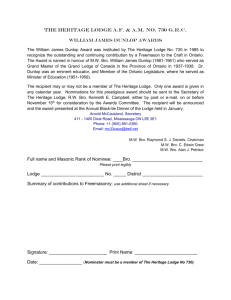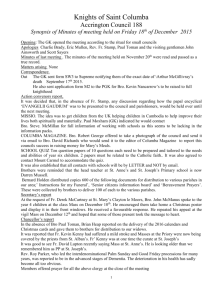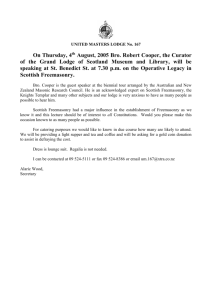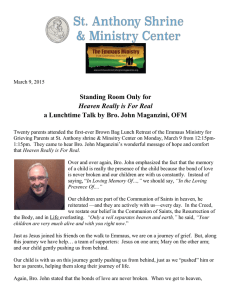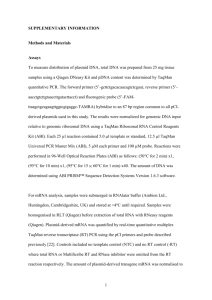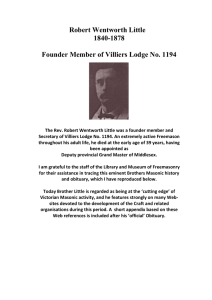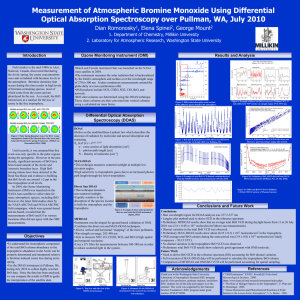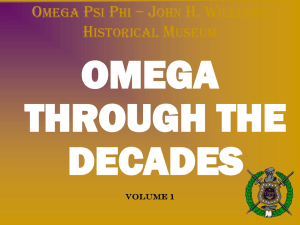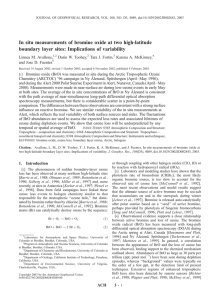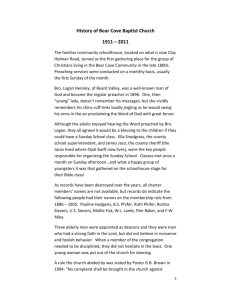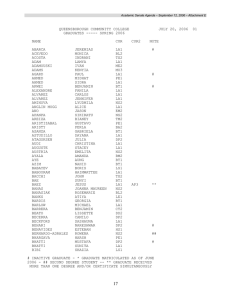LIMA1907V
advertisement
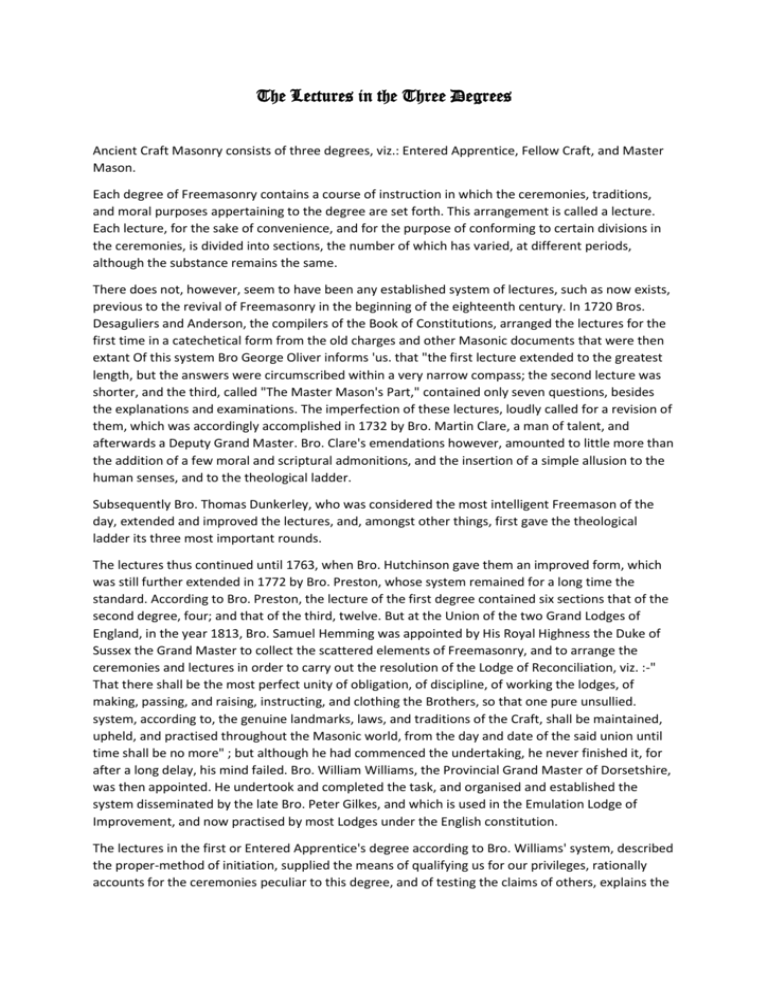
The Lectures in the Three Degrees Ancient Craft Masonry consists of three degrees, viz.: Entered Apprentice, Fellow Craft, and Master Mason. Each degree of Freemasonry contains a course of instruction in which the ceremonies, traditions, and moral purposes appertaining to the degree are set forth. This arrangement is called a lecture. Each lecture, for the sake of convenience, and for the purpose of conforming to certain divisions in the ceremonies, is divided into sections, the number of which has varied, at different periods, although the substance remains the same. There does not, however, seem to have been any established system of lectures, such as now exists, previous to the revival of Freemasonry in the beginning of the eighteenth century. In 1720 Bros. Desaguliers and Anderson, the compilers of the Book of Constitutions, arranged the lectures for the first time in a catechetical form from the old charges and other Masonic documents that were then extant Of this system Bro George Oliver informs 'us. that "the first lecture extended to the greatest length, but the answers were circumscribed within a very narrow compass; the second lecture was shorter, and the third, called "The Master Mason's Part," contained only seven questions, besides the explanations and examinations. The imperfection of these lectures, loudly called for a revision of them, which was accordingly accomplished in 1732 by Bro. Martin Clare, a man of talent, and afterwards a Deputy Grand Master. Bro. Clare's emendations however, amounted to little more than the addition of a few moral and scriptural admonitions, and the insertion of a simple allusion to the human senses, and to the theological ladder. Subsequently Bro. Thomas Dunkerley, who was considered the most intelligent Freemason of the day, extended and improved the lectures, and, amongst other things, first gave the theological ladder its three most important rounds. The lectures thus continued until 1763, when Bro. Hutchinson gave them an improved form, which was still further extended in 1772 by Bro. Preston, whose system remained for a long time the standard. According to Bro. Preston, the lecture of the first degree contained six sections that of the second degree, four; and that of the third, twelve. But at the Union of the two Grand Lodges of England, in the year 1813, Bro. Samuel Hemming was appointed by His Royal Highness the Duke of Sussex the Grand Master to collect the scattered elements of Freemasonry, and to arrange the ceremonies and lectures in order to carry out the resolution of the Lodge of Reconciliation, viz. :-" That there shall be the most perfect unity of obligation, of discipline, of working the lodges, of making, passing, and raising, instructing, and clothing the Brothers, so that one pure unsullied. system, according to, the genuine landmarks, laws, and traditions of the Craft, shall be maintained, upheld, and practised throughout the Masonic world, from the day and date of the said union until time shall be no more" ; but although he had commenced the undertaking, he never finished it, for after a long delay, his mind failed. Bro. William Williams, the Provincial Grand Master of Dorsetshire, was then appointed. He undertook and completed the task, and organised and established the system disseminated by the late Bro. Peter Gilkes, and which is used in the Emulation Lodge of Improvement, and now practised by most Lodges under the English constitution. The lectures in the first or Entered Apprentice's degree according to Bro. Williams' system, described the proper-method of initiation, supplied the means of qualifying us for our privileges, rationally accounts for the ceremonies peculiar to this degree, and of testing the claims of others, explains the nature and principles of our institution, instructs us in the form and constructions of the Lodge, and furnishes some important lessons on the various virtues, which should distinguish a Freemason. The lecture in the second or Fellow Crafts' degree, recapitulates the ceremony of passing a candidate, directs the candidate to an attentive study of the liberal arts and sciences, describes the construction of King Solomon's Temple, and gives an account of the ancient division of our institution into operative and speculative Masons. The lecture in the third or Master Mason's degree illustrates the ancient or proper method of raising the candidate to a sublime degree, the traditional history of the order exemplifies an important instance of Masonic virtue, and explains the various emblems of this degree.
